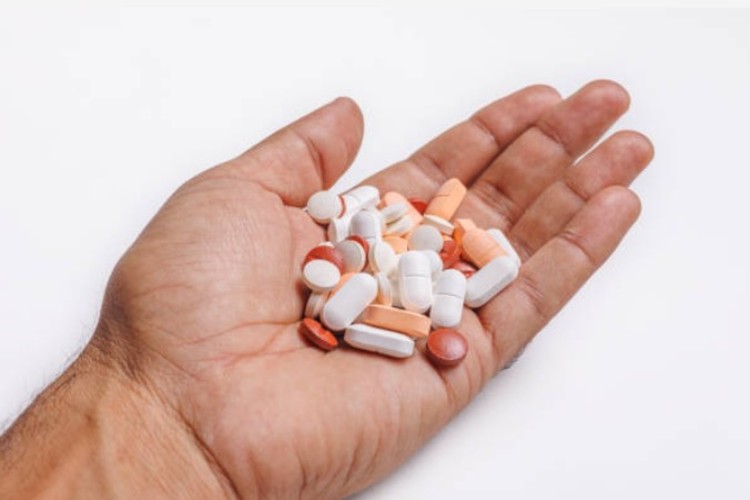
President Donald Trump’s threat to impose tariffs on pharmaceutical imports has sent shockwaves through the Indian pharma sector. While the global market held its breath when the sector was left out of the first round of tariffs, Trump’s comments this week at a National Republican Congressional Committee dinner indicated that a major tariff on pharmaceuticals would soon be announced.
The US has traditionally imported vast quantities of finished medicines from India, Europe, and China, with little to no tariffs on these products. However, Active Pharmaceutical Ingredients (APIs), which are used to make these drugs, do face certain duties. The proposed tariffs would target finished drugs, a category where India plays a dominant role in the global supply chain.
READ | India’s start-up boom needs a deep-tech makeover
US biggest market for Indian pharma companies
India’s pharmaceutical industry is heavily reliant on exports to the US. However, Trump’s desire to encourage foreign drug manufacturers to set up operations in the US could reshape the dynamics of this market. Although no official policy has been enacted yet, the looming threat of tariffs is already unsettling Indian exporters who hold a significant share of the US generics market, alongside China. Pharma is one of India’s most successful export sectors, and any imposition of tariffs would erode cost competitiveness, diminish profit margins, and potentially cause the loss of market share in a historically lucrative market.
Exports to the US accounted for approximately 31% of India’s total pharma exports, valued at $13 billion in the previous year. For major players like Sun Pharma, Cipla, Lupin, Dr Reddy’s, and Zydus Lifesciences, the US is a crucial revenue source, with exports to America constituting between 30% and 50% of their overall sales. These companies have invested heavily in obtaining approvals from the US Food and Drug Administration (FDA), building compliant facilities, and developing Abbreviated New Drug Applications (ANDAs) to secure their share of the generics pie. Generic medicines make up 90% of all prescriptions in the US, underscoring the strategic importance of the American market.
Companies focusing on high-volume products such as injectables, oral solids, and biosimilars will be particularly vulnerable. The pricing pressures in the US generics market are already intense, and the imposition of tariffs could exacerbate these challenges. Over the past few quarters, Indian drugmakers have benefited from a break in the price erosion that previously plagued the US generics market. This was due to new product launches and stabilising demand. However, a tariff of 25% or more could reverse these gains. While passing additional costs onto the US supply chain might provide some relief, the generics market’s sensitivity to price hikes limits how much of this cost can be absorbed without losing ground to competitors.
Furthermore, companies with slimmer margins or simpler product portfolios will be hit harder. If Indian firms are forced to localise production or alter packaging to circumvent the tariffs, regulatory and compliance costs could rise significantly.
Tariffs to hit Indian companies hard
Among the most affected will be Sun Pharma, India’s largest pharmaceutical company, which derives about 32% of its revenue from the US market. Sun Pharma’s portfolio includes both generics and specialty products such as dermatology and ophthalmology drugs. High tariffs may push the company to rely more on its higher-margin offerings as a buffer against the financial impact.
Cipla, which derives 28–30% of its sales from North America, faces particular risks in its respiratory and injectable segments. However, its diverse product portfolio could offer some stability. Lupin, which generates 37% of its revenue from the US, has made significant strides in complex generics filings but remains vulnerable to pricing disruptions.
Dr. Reddy’s, with 43–47% of its exposure in the US, and Zydus Lifesciences, with 45–47%, are similarly exposed, particularly in the injectables and biosimilars segments. These are areas where tariffs could have the most significant impact. Gland Pharma, a contract manufacturer pulling 54% of its sales from the US, faces a double whammy of tariff pressures and ongoing promoter-related uncertainties.
US healthcare system in for a setback
For years, America has benefited from the affordability of Indian generics. However, the proposed tariffs would erode this cost advantage, potentially increasing healthcare costs for American consumers. India currently supplies nearly 45% of the US’s generic drugs, fulfilling 90% of prescriptions while accounting for only 13% of total drug spending. If Indian firms are forced to pass on the costs of tariffs, US consumers will feel the pinch, particularly in a healthcare system already grappling with 271 drug shortages last year.
Currently, US imports of Indian medicines are not subject to significant taxes, unlike the nearly 11% duty that India imposes on imports of American drugs. If tariffs make certain generics unprofitable, Indian exporters may choose to abandon those product lines altogether. While companies like Cipla and Dr Reddy’s have US plants, relocating production for low-margin generics may not be a viable option. This could worsen supply gaps in the US market.
The Indian government is exploring the possibility of negotiating a bilateral agreement to address the tariff threat. Unless a deal materialises, Indian pharma stocks will likely remain volatile, and the sector will continue to face uncertainty. Meanwhile, the government is closely monitoring Trump’s next moves—whether an executive order will materialise, and whether generics or critical drugs might be spared. In the meantime, Indian pharma companies are already considering pivoting to alternative markets such as Europe and Africa, if necessary. With the US healthcare system also in the line of fire, Trump’s tariff gamble may not have the desired outcome.
